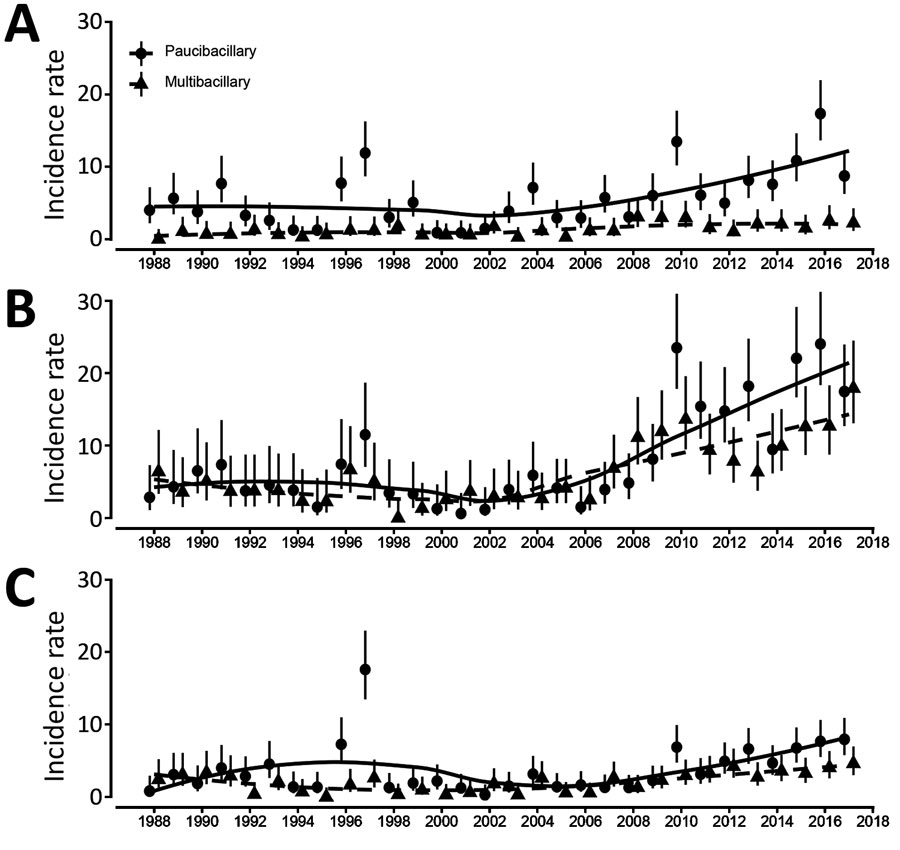Volume 26, Number 5—May 2020
Synopsis
Surveillance of Leprosy in Kiribati, 1935–2017
Figure 3

Figure 3. Age-specific incidence rates (cases/10,000 population) for multibacillary and paucibacillary leprosy, by age group, Kiribati, 1988–2018. A) Age 0–14 years; B) 15–24 years; C) 25–64 years. Points represent the age-specific rate and vertical lines 95% CIs. Solid lines indicate the locally estimated scatterplot smoothing moving average of age-specific incidence rates of paucibacillary leprosy; dashed lines, of multibacillary leprosy.
Page created: April 16, 2020
Page updated: April 16, 2020
Page reviewed: April 16, 2020
The conclusions, findings, and opinions expressed by authors contributing to this journal do not necessarily reflect the official position of the U.S. Department of Health and Human Services, the Public Health Service, the Centers for Disease Control and Prevention, or the authors' affiliated institutions. Use of trade names is for identification only and does not imply endorsement by any of the groups named above.